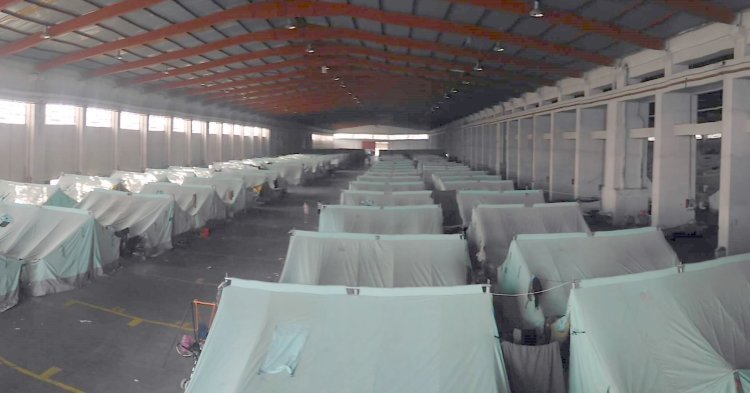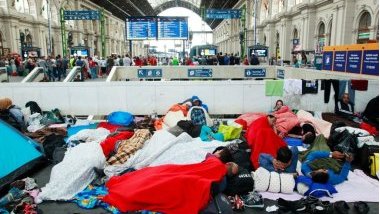Adopted in that same year, the European Agenda on Migration is a major political document in the field of migration. The Agenda is built upon one main concept: migration is a common European issue and has to be treated as such, thus through a common European approach. In this regard, the document provides for a variety of solutions to tackle the issue. But one solution deserves particular attention: the hotspot approach.
For those that live in countries of first entry, the word ‘hotspot’ is probably familiar from newspapers or TV news. The problem is that neither means of communication provides for the full picture but drives their readers/audience towards specific political position on migration. Too often media end up acting as governmental mouthpieces rather than watchdogs, telling the truth, but only a small part of it. Indeed, rarely have they touched upon the topic of what a hotspot actually is and what happens there.
The hotspot approach: what, where, why?
What:
A hotspot is “an area at the Union’s external borders facing significant migratory pressure” (Danish Refugee Council). In this area, reception facilities are built to initially receive, identify, register and fingerprint irregular immigrants and asylum seekers. Each migrant is obliged to undergo this procedure. All these tasks are carried out by Frontex, the European Asylum Support Office, Europol and the interested Member States.
The procedures also have to be carried out in compliance with the Common European Asylum System’s norms, international human rights law, and two main documents concerning human rights ratified by all EU Member States: the Charter of Fundamental Rights of the European Union and the European Convention on Human Rights.
Where:
Despite the required compliance with law, what happens in the hotspots is almost on the other side of the spectrum. Asylum seekers and irregular migrants undergo treatment clearly violating human rights, especially in Italy and Greece.
A bright example of violation of human rights is arbitrary detention, which in 2015-6 has been a tactic used in Italy. Irregular immigrants were deprived of their liberty as a strategy to force them to give their fingerprints, through prolonged detention and physical force, as Amnesty International reported.
A similar situation occurs in Greece whose hotspots are now nothing but detention sites where irregular immigrants
are detainedis probably the main source of concern. 3,800 individuals are held in a centre that can contain a maximum of 1,500 people. There are so many human beings that new arrivals sleep on cement, and pregnant women, children and vulnerable asylum seekers live in tents. Hygiene conditions are detrimental, with water available for 3-4 hours per day and not during weekends. Inadequate winterisation led to the death of three people in winter 2016. They died because of cold.
The situation in Italy is not positive either. In the Pozzallo centre, no actual bed exists, rows of bunk beds or mattresses take pretty much half of the available space in the building which seems a hanger. Nothing divides the sleeping areas for men, women and unaccompanied children. In Lampedusa, those in the facilities are not even permitted to leave the hotspot.
Why:
Let’s start by saying that the Agenda per se might work. Theoretically, it provides for initial screening of irregular migrants before their applications are examined. Still, in theory, all the checks should be carried out in compliance with the law and immigrants should be able to find the so longed-for haven.
Yet, reality does not match with theory. Yes, the initial screening happens, but all the rest does not happen.
A question of course spontaneously raises: why does the EU let this happen? The answer is simple: deterrence.
If officially, the hotspot approach aims at helping immigrants and States at the borders, unofficially it is a measure to deter potential immigrants from leaving and arriving at the EU. Deterrence means that States or, like in this case, supranational organisations take actions to avoid something - in this case the arrival of irregular migrants or possible asylum seekers. The same has been done for example by Australia since 2001 and by the US Administration with the Mexican border. There is no shortage of examples.
What one can also ask is why the European Union, the regional system that seems to be pro-human rights, adopts policies that do not comply with them. National interests are the answer. Too many Member States aim at deterring arrivals. Too many of them, whether at the external border or not, see immigrants as a threat to their sovereignty, autonomy, security and identity. If national interests are so rooted in the EU, the margin of manoeuvre the organisation has is very limited. Recent election results display that anti-immigration forces are well-supported all over the EU.
This, however, does not mean immigrants will be left in a limbo of uncertainty. Some countries are still open to them and are pushing towards pro-immigration policies. There is but an intrinsic fight that will be going on in the European Parliament between those who are welcoming and those who spread a rhetoric of fear of the “Other”.
But as it is these days, there is not that much of a prediction that can be made. We have to wait and see. What matters is that we look at whatever the outcome is through a critical perspective. Nothing is black or white, the shades are meaningful and we all should focus on them.




Follow the comments: |
|
